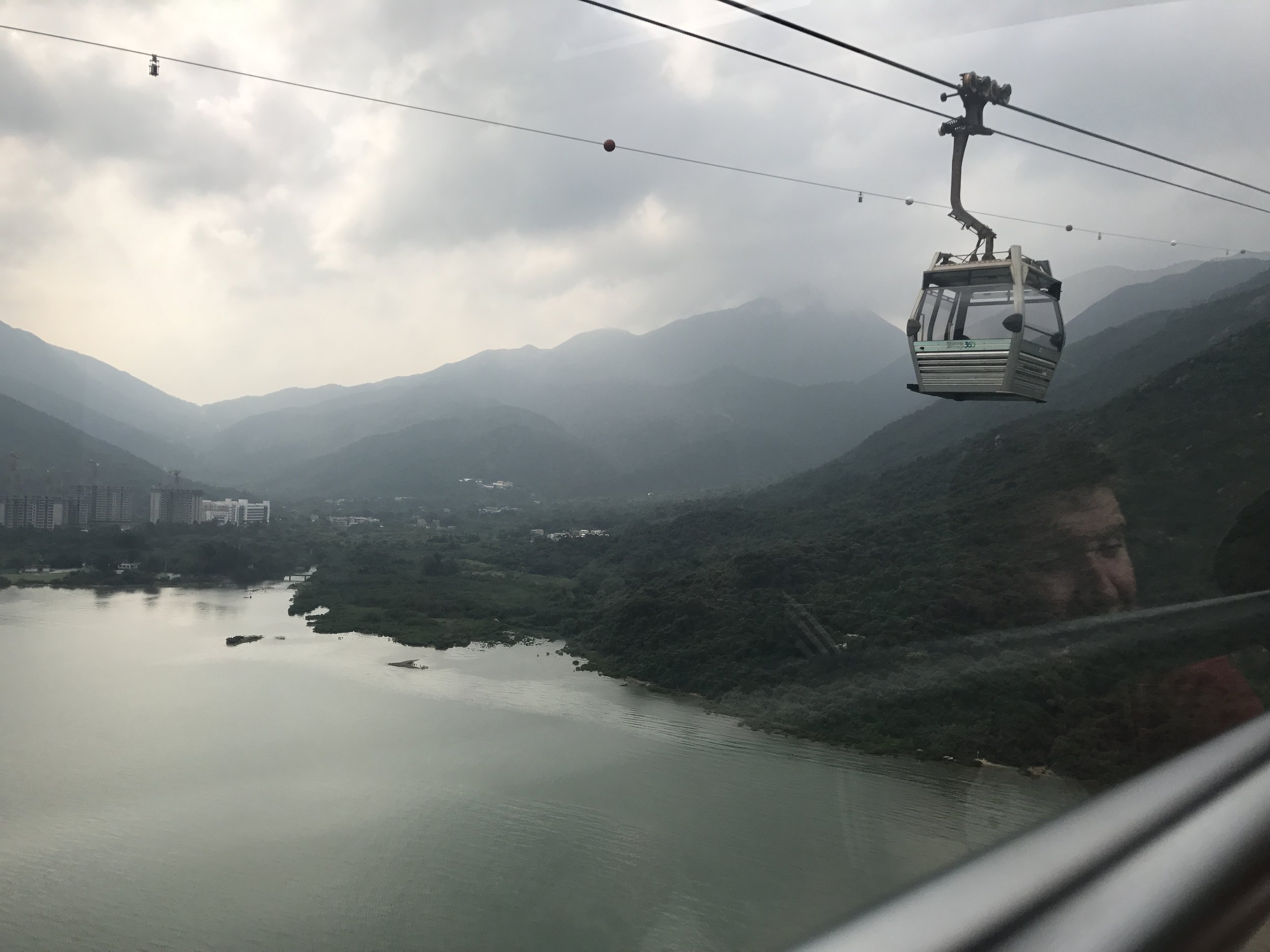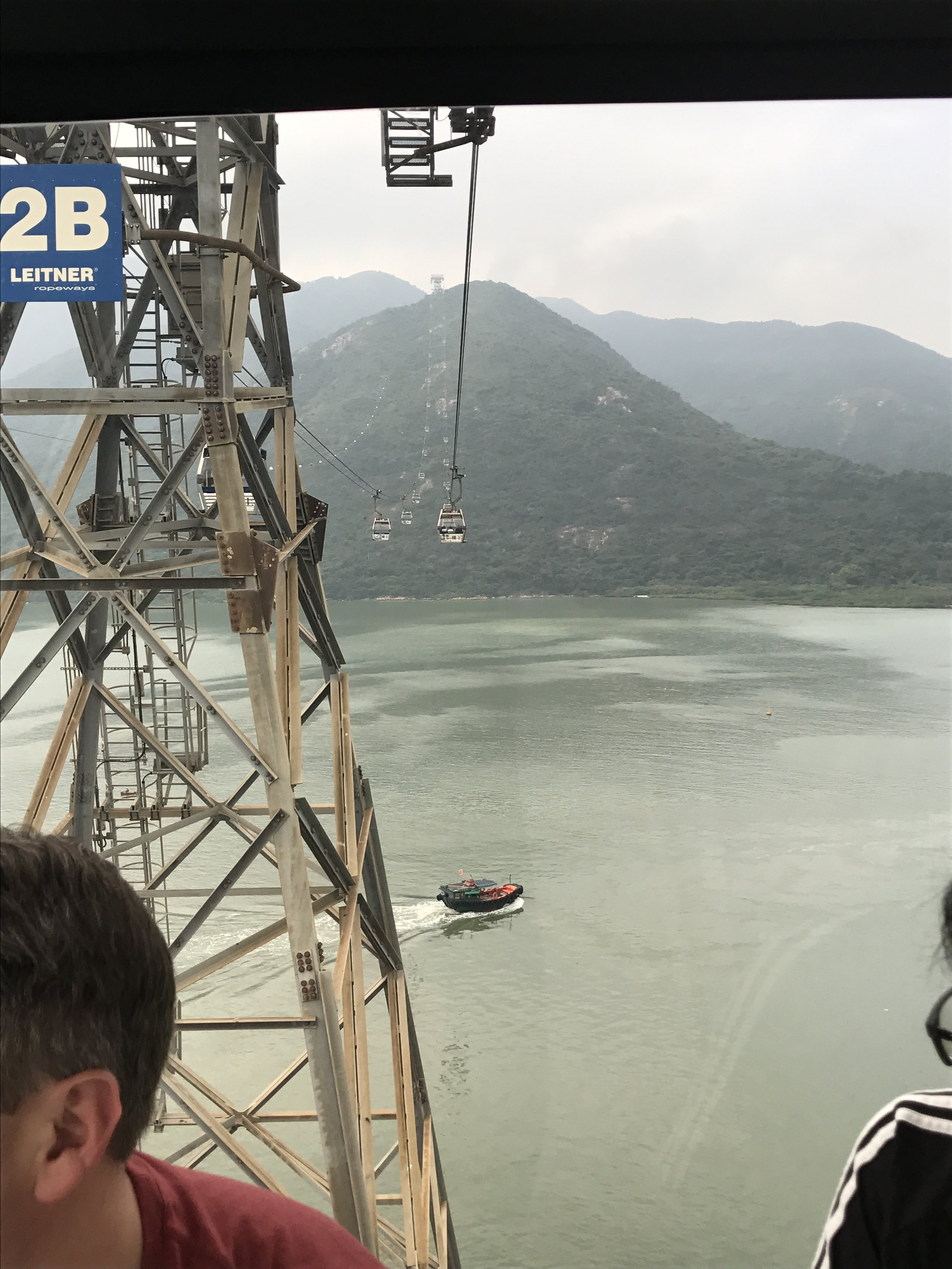Tips for a day at the Big Buddha and Po Lin Monastery
This past weekend, I checked another Hong Kong must-do off the tourist list by visiting the Tian Tan Buddha, or Big Buddha (as many call it) and the Po Lin Monastery.
The Big Buddha was completed in 1993 and is the second largest outdoor-sitting Buddha in the world (the largest is in Taiwan). Standing 112 ft. high, and weighing 250 metric tons, it is certainly a sight to see if you find yourself in Hong Kong.
I titled this post “A day” at the Big Buddha and Po Lin Monastery but you could actually knock this out in a half day, depending on if you grab food, or if you want to hike the trails around the area.
Here are my tips for planning your trip
- The Big Buddha is located on Lantau island, right next to the airport. I would suggest purchasing an octopus card and taking the MTR. Depending on where you’re coming from, it’s about a 45-minute ride.
- Get there before noon. I arrived around 10 a.m. and only waited in line for about 10 minutes. If you get there in the afternoon you will spend more time in line than you will spend actually at the Buddha itself, seriously.
- If you aren’t squeamish or afraid of heights, take the 360 cable car, glass bottom ride through the mountains! I’ve mentioned this before, but I am terrified of heights. Even though it was a little scary, I’m glad I did it. The ride is about 20 minutes long, but the views are totally worth it. You can also take a bus, which is the cheaper option (about 17 HKD).
- If you’re taking the cable car, be sure to purchase your tickets in advance. This will greatly shorten the amount of time you will spend waiting in yet another line.
- If you’re visiting around lunch time, consider purchasing the vegetarian meal offered by the monastery. We didn’t do this, but I’ve read from other bloggers who say it’s some of the best meat-free food they’ve ever had (who knew!). Unfortunately, if you don’t purchase the meal ticket, you cannot gain access inside (or under, rather) the Big Buddha.
- Don’t be freaked out by the wild dogs and cows. It’s so fascinating to be in a place where these wild animals roam. As long as you don’t bother them, they shouldn’t bother you.
Once you get off the cable car (or bus), enjoy walking around the village. I was a little surprised at how commercialized the area was (Starbucks and Subway are some of the first things you notice when you walk in) nonetheless, the area is still beautiful.
Next, you’ll want to start making your way to the Big Buddha, up all 268 steps. At the top, you’ll find the Buddha surrounded by six smaller bronze statues known as “The Offering of the Six Devas”. Each kneeling statue represents a different offering to the Buddha, which includes, music, fruits, incense, ointment or light (lamp) and flowers. Each of the offerings is a symbol that represents morality, charity, patience, wisdom, zeal and meditation. The views are spectacular at the top, especially on a clear day.
Nearby is the Po Lin Monastery, which was completed in 1906. Entry to the monastery is free. After touring the monastery, there are a few hiking trails nearby that would take you around Lantau island. I didn’t do this on my trip because it started to rain, but I imagine it would be worth it if you had the time.
If hiking isn’t on your itinerary, then then there’s plenty of shopping and small restaurants within the little village. I have to say that I was little disappointed from this perspective. Being a first timer, I thought I would be visiting a more tranquil “hallowed ground” sort of atmosphere, but instead it’s a bit of a tourist trap complete with commercialization and crowds. Nevertheless, that doesn’t change the history and meaning, which is why I will still say the Big Buddha is a Hong Kong must-do.















